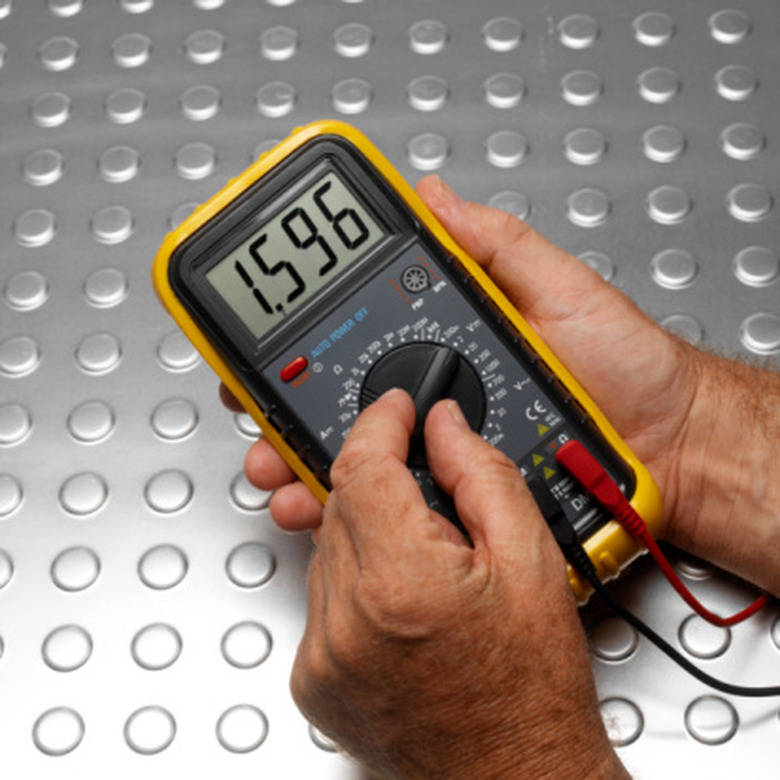How To Measure Low Voltage Amps
The flow of electricity along a wire is actually a flow of electrons. This flow is the current and it is measured in amperes, or amps. For those who like precision, an ampere is the flow of exactly 6,241,509,479,607,717,888 electrons per second. As electricity flows through a conductor, it has to "work" to overcome resistance, and this alters the current. Measuring the current is thus a useful diagnostic tool. Measuring current is a basic procedure that requires no previous electrical knowledge. An ammeter or digital multimeter is required.
Step 1
Switch off the electricity, set the multimeter to test volts and check the circuit. Proceed only when you are certain that there is no power in the circuit.
Step 2
Break the circuit at the point where the current testing is to take place; for example, uncouple a wire connection, or disconnect the feed wire from a junction box.
Step 3
Set the multimeter to either AC or DC current, according to the type of circuit. Battery powered systems are DC and mains powered electricity supplies are AC. If the meter has an auto range setting, select it; otherwise select the highest current range available.
Step 4
Connect the two test probes to the ends of the broken wire. Polarity is not important, but good connections are essential. Loose contacts may produce false readings.
Step 5
Check the meter settings and the probe positions, and then switch on the electricity supply. Read the current value from the multimeter digital display. After recording the value, switch off the power supply, disconnect the meter, and reconnect the broken wire.
TL;DR (Too Long; Didn't Read)
Ammeters must become part of the test circuit. They must be in series rather than in parallel.
Warning
Overloading the meter in current measuring mode may create excessive heat and lead to fire and serious electric shock, even from low voltages.
Loose probe contacts increase resistance in the circuit, and increased resistance results in a drop in current.
Cite This Article
MLA
Robinson, David. "How To Measure Low Voltage Amps" sciencing.com, https://www.sciencing.com/measure-low-voltage-amps-8463638/. 24 April 2017.
APA
Robinson, David. (2017, April 24). How To Measure Low Voltage Amps. sciencing.com. Retrieved from https://www.sciencing.com/measure-low-voltage-amps-8463638/
Chicago
Robinson, David. How To Measure Low Voltage Amps last modified March 24, 2022. https://www.sciencing.com/measure-low-voltage-amps-8463638/
